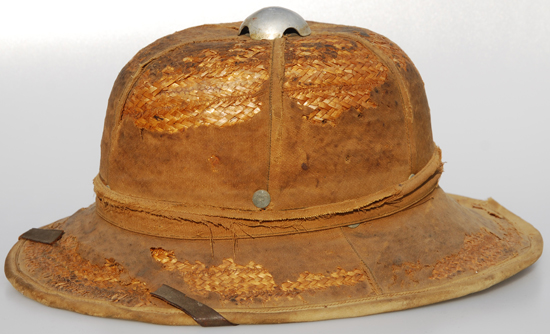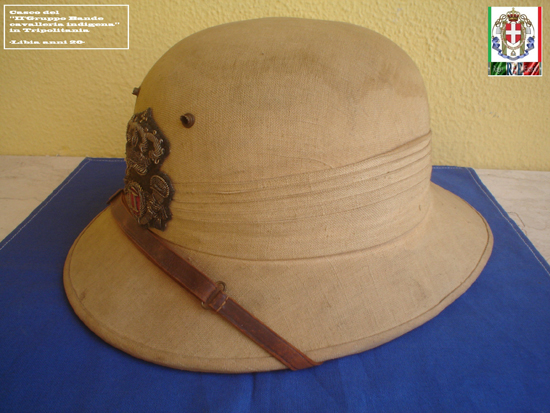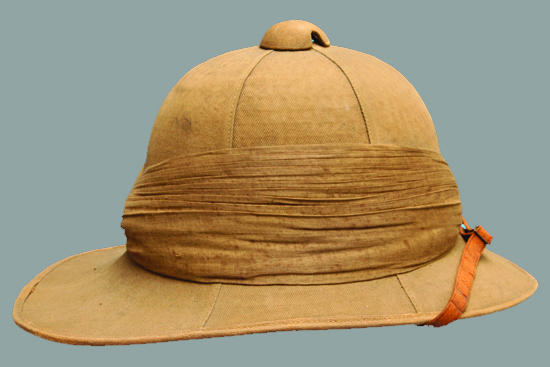
A German World War II sun helmet.
This was the standard pattern used by the Afrika Korp. While most of these were made of cork, there are many examples that were apparently made of weaved straw with wicker support. This example, while in bad condition offers an excellent look at the “inside” of the helmet
While sola pith and cork are among the most commonly used materials in the construction of sun helmets, straw weave and wicker were used at times as an ersatz material, especially in wartime. We previously noted two examples of British-made Wolseley straw helmets in the collection of Stuart Bates. While these are the only two known surviving examples of British straw helmets of this pattern, there are many surviving examples of straw helmets from other countries.
How many of these helmets were produced remains a mystery, but surviving examples given an indication that serious craftsmanship went into their construction. Continue reading →



